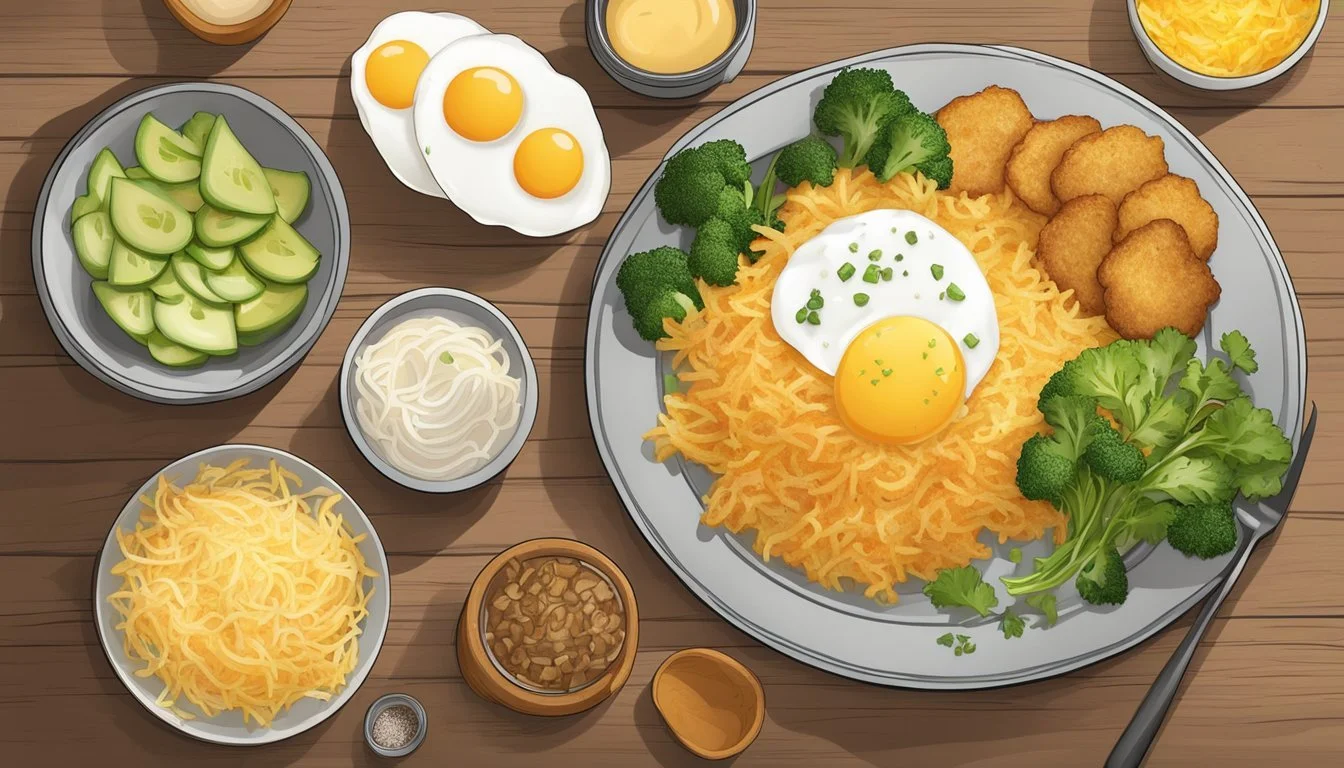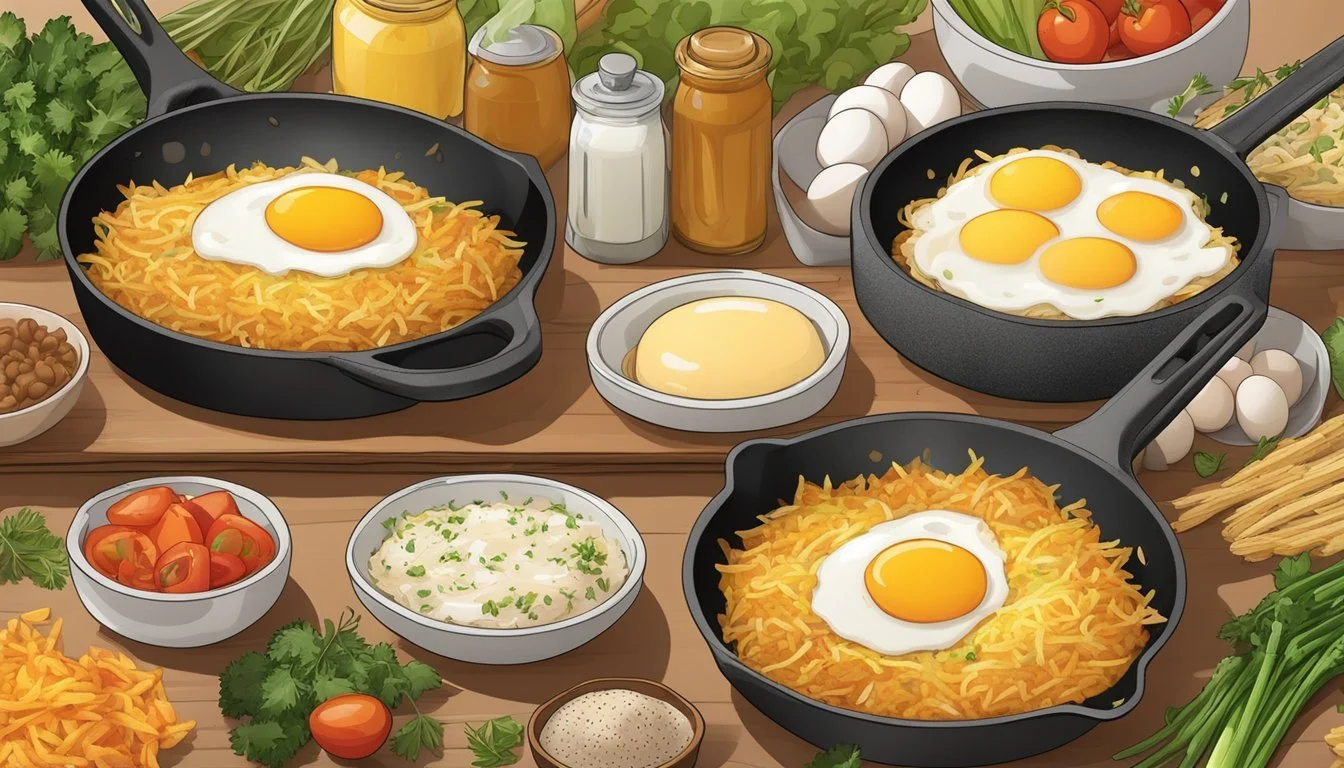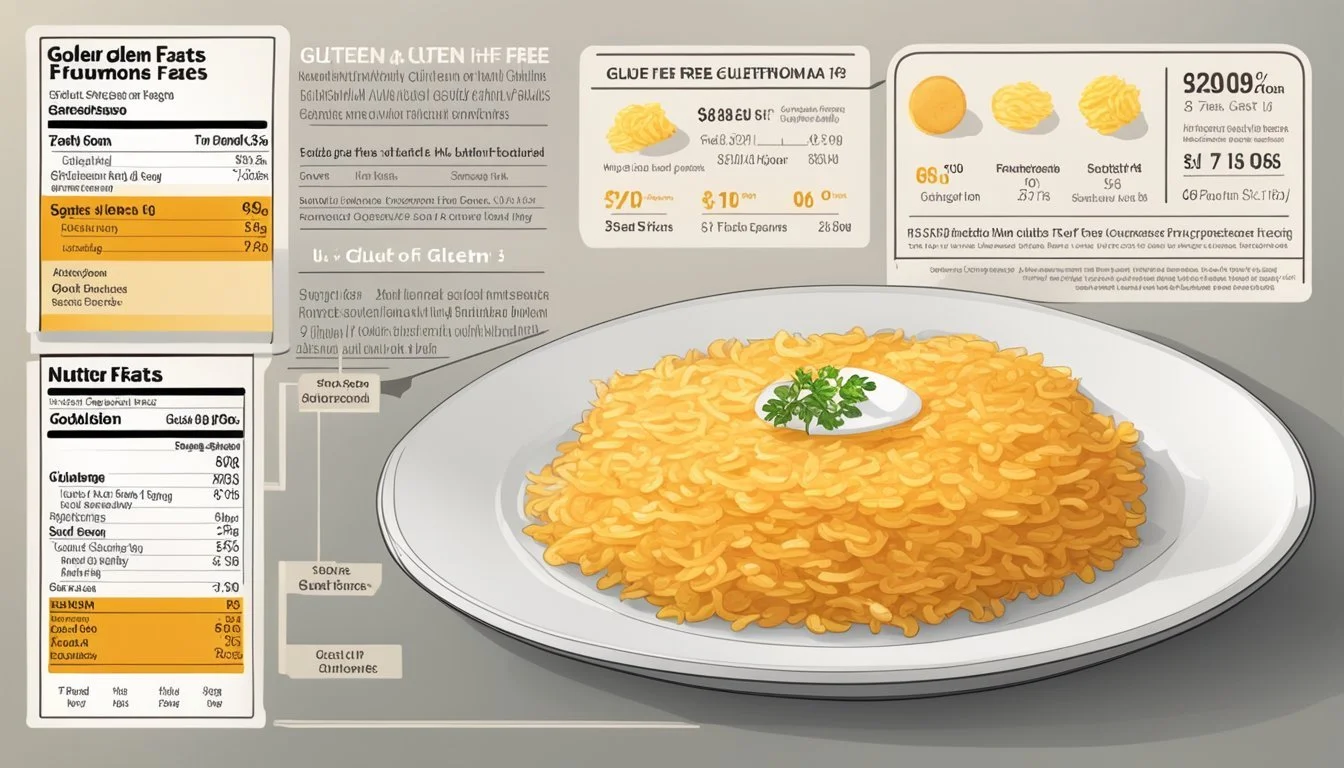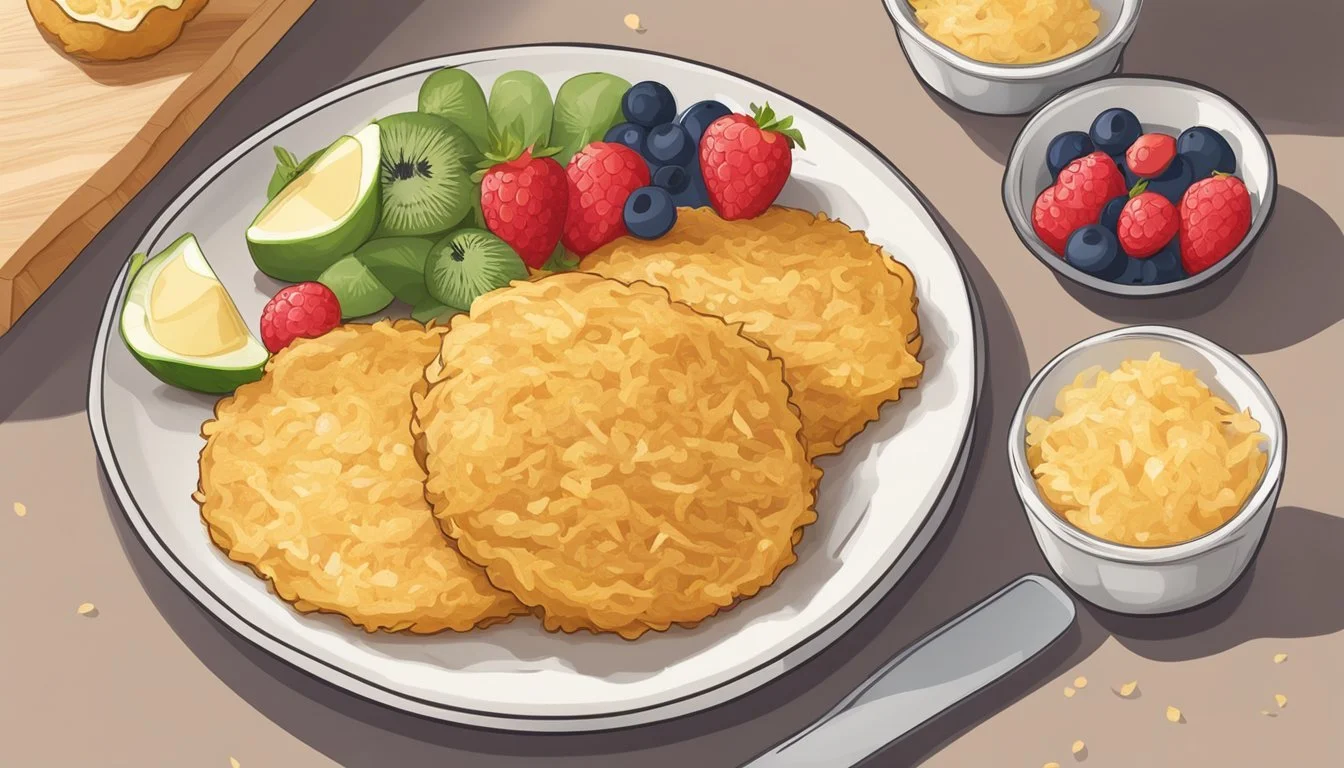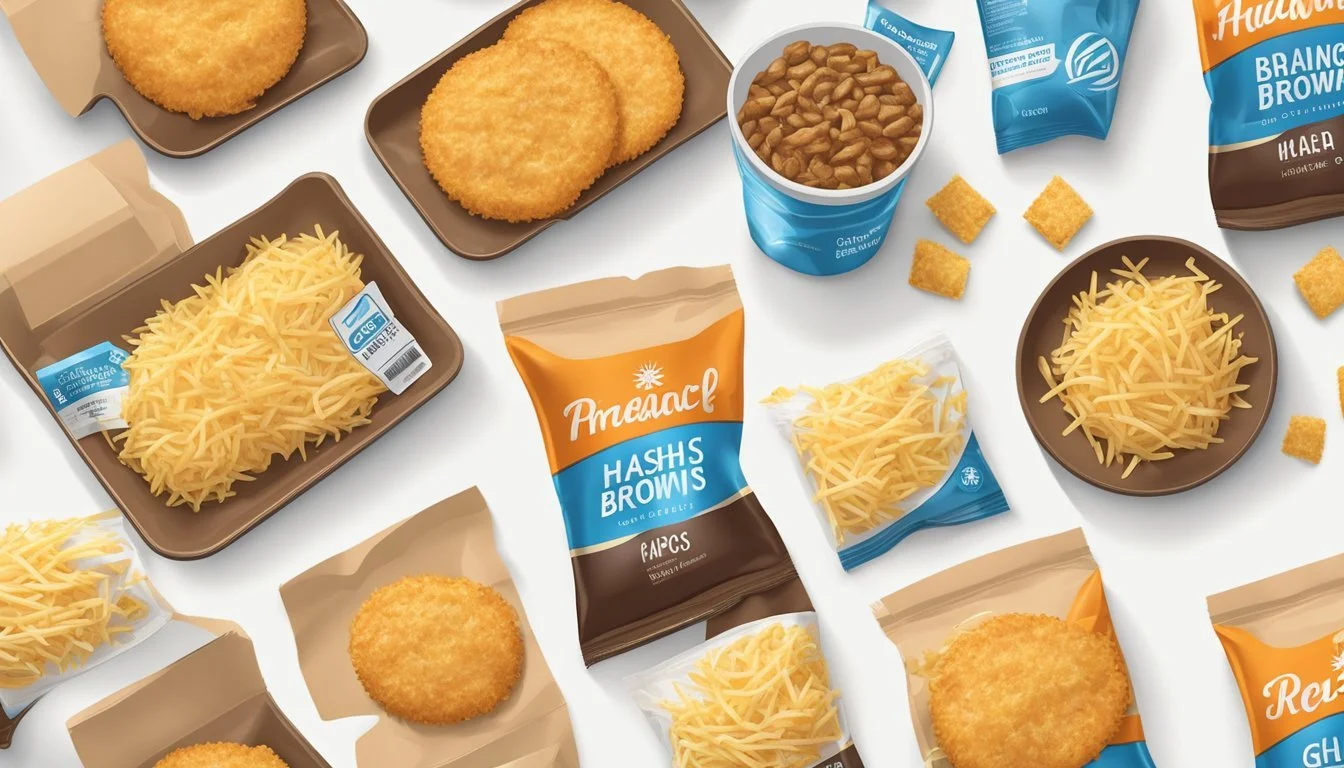Are Hash Browns Gluten-Free?
Unveiling the Truth About This Breakfast Staple
Hash browns are a beloved breakfast staple enjoyed by many, featuring grated or diced potatoes (What wine goes well with potatoes?) that are fried until they reach a delightful crispiness. The simplicity of their basic ingredients—potatoes, salt, and sometimes a touch of butter or oil—means that in their purest form, hash browns should naturally be free of gluten. Gluten is a group of proteins found in grains such as wheat, barley, and rye. Since potatoes are a gluten-free vegetable, they are safe for individuals with gluten intolerance when prepared without any gluten-containing additives.
However, when considering whether hash browns are gluten-free, it's crucial to look beyond the core components. The cooking process and added ingredients can affect their gluten status. Flour or other gluten-containing substances might be introduced either as a binding agent or for creating a particular texture. Additionally, cross-contamination is a risk to consider, especially in a kitchen where gluten-containing products are prepared. This can inadvertently introduce gluten into otherwise gluten-free hash browns. Thus, while the inherent ingredients of hash browns are gluten-free, ensuring they remain that way through to the end of the cooking process requires attention to detail and awareness of all substances used.
Understanding Hash Browns
Hash browns are a versatile and popular breakfast item. This section will break down their essential ingredients and discuss the common variations.
Basic Components
The fundamental elements of hash browns are fairly straightforward. They typically consist of:
Potatoes: The star ingredient, usually grated or shredded.
Oil/Butter: Used for frying or baking to achieve a crispy texture.
Salt and Pepper: Basic seasonings to enhance flavor.
These ingredients form the traditional hash brown patty, which when cooked correctly, should have a crispy exterior with a soft interior.
Variations in Recipes
Recipe adaptations can introduce a variety of additional ingredients, creating unique spins on the classic hash brown. Some common inclusions are:
Onion: Adds sweetness and a slight crunch.
Garlic: Infuses an aromatic flavor.
Spices: Such as paprika or cayenne pepper, may be added for extra heat.
Moreover, some recipes call for a binder such as egg or cheese to hold the mixture together, while others keep it simple, relying solely on the starchiness of the potatoes. It's important for consumers to read labels or ask about ingredients, as variations like flour can introduce gluten into an otherwise gluten-free dish.
Gluten-Free Considerations
When considering whether hash browns are gluten-free, it is crucial to examine the ingredients used, the preparation environment, and the presence of any gluten-free certifications to ensure they meet the dietary needs of individuals with celiac disease or gluten sensitivity.
Identifying Gluten
Gluten is a group of proteins commonly found in wheat, barley, and rye. For individuals with celiac disease or gluten sensitivity, consuming gluten can lead to adverse health effects. In the context of hash browns, the basic ingredients—potatoes, oil, and salt—are naturally gluten-free. However, additional ingredients such as flour for binding or flavoring agents can introduce gluten into the recipe.
Gluten-containing ingredients to watch for:
Wheat flour
Barley-based flavorings
Rye bread crumbs
Risks of Cross-Contamination
Cross-contamination can occur when gluten-free foods come into contact with gluten-containing foods or surfaces. This is particularly common in settings such as restaurants or shared kitchen facilities where utensils, fryers, and workspaces are used for both gluten-free and gluten-containing food items.
Common cross-contamination scenarios:
Shared cooking surfaces
Fryer oil used for breaded products
Utensils like spatulas used interchangeably
Individuals should inquire about the kitchen practices to minimize the risk of ingesting gluten inadvertently.
Gluten-Free Certification
The presence of a gluten-free certification label on packaged hash browns provides assurance that the product meets strict gluten-free standards. Certified products are tested and verified to contain less than 20 parts per million (ppm) of gluten, which is the safe threshold for most individuals with gluten-related disorders.
Certification indicators to look for:
A "Certified Gluten-Free" logo
Statements like "Made in a gluten-free facility"
Purchasing products with gluten-free labels is advisable for those with celiac disease or severe gluten intolerance to avoid any potential gluten exposure.
Preparation and Cooking Tips
The preparation and cooking of gluten-free hash browns focus on the right type of potatoes, effective grating methods, and choosing between frying or baking to achieve a crisp texture. The process can influence both the outcome and the duration it takes to cook these breakfast favorites.
Choosing the Right Potatoes
Selecting the right kind of potatoes is crucial for the perfect hash browns. Russet potatoes are the preferred choice due to their high starch content, which helps achieve a crispy exterior. Preparing hash browns begins with washing and peeling the potatoes. The prep time typically takes around 10 to 15 minutes, depending on the quantity.
Prep Time: 10-15 minutes
Total Time: Varies; depends on cooking method
Grating Techniques
Once the potatoes are peeled, they need to be grated. Using a box grater offers the most control and efficient results. It's important to grate directly into a clean tea towel to facilitate the removal of excess moisture, which is a key step. After grating, one should firmly squeeze out the liquid by twisting the towel. This technique helps prevent soggy hash browns and reduces cook time.
Grate: Firmly with a box grater
Towel: Use to wring out moisture
Frying vs Baking
One has two options for cooking: frying or baking. Frying in a skillet over medium-high heat with a little oil results in crispy edges and usually takes about 4-5 minutes per side. On the other hand, baking in a pre-heated oven at around 190°C (375°F) can free up the cook's attention and reduce the oil content. Baking might take approximately 20-25 minutes until golden. Both methods have their merits, but frying offers a faster cook time for those who prefer it.
Frying: 4-5 minutes per side, medium-high heat
Baking: 20-25 minutes, 190°C pre-heated oven
Cook Time: Frying is quicker; baking takes longer but is healthier
Following these guidelines, kitchen enthusiasts can create delicious gluten-free hash browns that have the right texture and taste.
Homemade Gluten-Free Hash Browns
Creating gluten-free hash browns at home ensures control over ingredients and accommodates dietary restrictions with ease. These hash browns substitute common gluten-containing elements with safe alternatives without compromising on the classic taste and texture.
Selecting Safe Ingredients
When making gluten-free hash browns from scratch, one must carefully select ingredients that are inherently gluten-free. It is critical to start with:
Potatoes: The primary ingredient, ensure they are fresh and clean.
Onions: Often added for flavor; again, choose fresh onions.
Eggs: Serve as a binding agent in some recipes.
Seasonings: Salt and pepper are safe, but always check the labels of any additional seasoning blends for hidden gluten.
Flour Substitutes: If needed, opt for gluten-free flours like tapioca flour or cornstarch.
Cooking Fat: Use butter or ghee, but confirm there are no gluten-containing additives.
In choosing these ingredients, always verify the products were not processed in facilities that handle gluten-containing items to avoid cross-contamination.
Gluten-Free Homemade Recipe
A basic gluten-free hash brown recipe may proceed as follows:
Prepare Potatoes: Grate cleaned potatoes, then rinse to remove excess starch, and dry thoroughly.
Mix Ingredients: Combine grated potatoes with finely chopped onions, and gluten-free flour (such as cornstarch), and season with salt and pepper.
Bind: If the mixture needs additional binding, one could add an egg.
Shape: Form the mixture into hash brown shapes, typically small patties or pancakes.
Cook: Heat a skillet with a liberal amount of ghee or oil over medium-high heat. Once hot, add the hash brown patties, cooking until they are golden and crispy, then flip to cook the other side.
Here's a quick reference table for creating the hash brown mixture:
Ingredient Amount Note Grated potatoes 4 cups Squeezed of moisture Finely chopped onion 1/2 cup Optional for flavor Gluten-free flour 1/4 cup Cornstarch works well Salt To taste Typically a pinch Pepper To taste Usually a dash Egg (optional) 1 large As binder if needed
These steps offer a simple path to homemade gluten-free hash browns that maintain the crispiness and comfort associated with this classic dish.
Commercial Hash Browns
When purchasing commercial hash browns, consumers face two main considerations: understanding product labels and ensuring safe dining experiences. It's crucial to examine labels for gluten-containing ingredients and cross-contamination risks, while dining out requires communication with restaurant staff to affirm gluten-free practices.
Reading Labels and Brands
Frozen Hash Browns: When buying frozen hash browns, consumers should meticulously check the label for any mention of wheat, barley, rye, or any other sources of gluten. Brands like Trader Joe's offer gluten-free options, and their packaging is usually clearly marked to save consumers time when shopping.
Brands Gluten-Free Options Dairy-Free Options Notes Trader Joe's Yes Yes Clear allergen labeling, check for a gluten-free notation. Other Retail Brands Varies Varies Look for allergen information and gluten-free certifications.
Affiliate Links and Websites: Retailers or websites offering gluten-free hash browns may include affiliate links directing to products that are safe for those avoiding gluten. Always confirm the gluten-free status by visiting the brand's official website or contacting their customer service to access the most accurate and current allergen information.
Dining Out Safely
Restaurant Staff: When dining out, it's important for diners to communicate their gluten-free needs with the restaurant staff. Ask specific questions about how the hash browns are prepared and if there's a chance of cross-contamination with gluten-containing products.
Allergen Information: Restaurants should provide allergen information upon request. Diners should look for menu items that are marked as gluten-free. Be cautious as some establishments may use the same fryers for gluten-containing products and gluten-free options like hash browns, which poses a risk of cross-contamination.
In conclusion, for those requiring gluten-free options, careful examination of labels, brand research, and clear communication regarding dietary restrictions in restaurants are key to safely enjoying commercial hash browns.
Nutritional Information
Hash browns are a popular breakfast food, and their nutritional profile is of interest to those managing their diet. This section will detail the caloric content and protein and fiber levels found in typical servings of hash browns.
Caloric Content
A typical serving size of hash browns, which is approximately 1 cup (156 grams), contains about 130 to 150 calories. Calories can vary based on preparation methods and added ingredients like oil, butter, or cheese.
Protein and Fiber
Hash browns primarily consist of potatoes which offer a modest amount of protein and fiber. A serving typically has around 2 to 3 grams of protein and can have about 2 to 4 grams of dietary fiber. The fiber content aids digestion, while protein is essential for muscle repair and growth. Though they are not high in protein, hash browns can contribute to the daily recommended intake, especially if combined with other protein-rich foods. It should be noted that hash browns are not a significant source of vitamin C.
Dietary Variations and Additions
Hash browns can be versatile in dietary adaptations and can be enhanced with a variety of toppings. Whether one follows a vegan or vegetarian diet or simply seeks flavorful additions, hash browns can be tailored to fit these preferences.
Vegan and Vegetarian Options
Vegan and vegetarian diners can easily integrate hash browns into their meals. Traditionally, making hash browns requires potatoes, salt, and a cooking medium such as oil. For a vegan variation, cook the hash browns in plant-based oils or vegan butter. Vegetarians might opt for dairy-based butter. One can also find or request plant-based cheese in place of traditional cheese to maintain a vegan diet while indulging in cheesy hash browns.
Vegan Choices:
Oils: Olive oil, coconut oil, or any other plant-based oils.
Butter: Vegan butter substitutes.
Cheese: Plant-based cheese alternatives.
Vegetarian Choices:
Butter: Regular dairy-based butter.
Cheese: Traditional dairy cheeses.
Additional Toppings and Pairings
To elevate the taste and nutritional value, various toppings can be added to hash browns. Protein-rich toppings like bacon, ham, or cheese can cater to non-vegetarian palettes, while vegans can add dairy-free cheeses and plant-based bacon alternatives. For those seeking a complete meal, hash browns are often served with toast or as part of a larger breakfast platter. Baked hash browns can also include mixed-in ingredients such as bell peppers or onions for added flavor and texture.
Non-Vegan Toppings:
Meat: Crispy bacon, diced ham.
Cheese: Shredded cheddar, Swiss, or any preferred variety.
Vegan and Dairy-Free Toppings:
Plant-based bacon.
Dairy-free cheese options.
By understanding these variations and additions, one can customize hash browns to fit a range of dietary needs without compromising on taste.
Brands and Products
When searching for gluten-free hash browns, consumers have a variety of brands to choose from that offer certified products. It is crucial to understand and scrutinize product labels to ensure the absence of gluten and cross-contamination, especially for individuals with celiac disease or gluten sensitivity.
Recommended Gluten-Free Brands
Several brands are known for their commitment to gluten-free products. These brands offer hash browns that are specifically labeled as gluten-free:
Ore-Ida: Known for a wide range of potato products, Ore-Ida's Gluten-Free Hash Browns are made in a dedicated gluten-free facility, reducing the risk of cross-contamination.
Simply Potatoes: Their shredded and diced hash browns are labeled gluten-free, providing a convenient option for a quick breakfast.
Dr. Praeger's: Dr. Praeger's offers a selection of hash browns that are labeled gluten-free and are designed for those looking for whole food options.
Whole Foods Market: The store's brand offers gluten-free hash brown patties, appealing to those who prioritize natural ingredients.
For those who frequent fast-food establishments, it's worth noting that:
McDonald's: The hash browns at McDonald's may not be gluten-free due to cross-contamination in the fryers.
Understanding Product Labels
Interpreting product labels correctly is key to ensuring that hash browns are genuinely gluten-free.
Reading Labels: Always read the ingredients list thoroughly to check for any hidden sources of gluten. Look for terms like wheat, barley, rye, and malt, which indicate gluten presence.
Certified Gluten-Free: Seek out brands with a certified gluten-free label, which have undergone third-party testing to validate their gluten-free status.
Cross-Contamination Warnings: Pay attention to disclaimers regarding shared equipment or facilities that also process wheat, as these products may not be safe for individuals with celiac disease.
By choosing recognized gluten-free brands and carefully examining product labels, consumers can enjoy hash browns without the concern of ingesting gluten.

